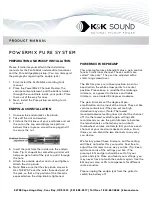
Table 4. Voltage Remote Sense Output Verification
Level Range Limit Range and Limit Test Point DMM Range Load
1
Load
2
Load
3
10 V
100 mA
10 V
10 V
50 Ω
1 kΩ
50 Ω
1.
Set the first specified level range, limit range, and limit on the NI 4141.
2.
Set the level on the NI 4141 to the first specified test point.
3.
Measure the LO lead drop with
DMM1
from the negative terminal of the device to the
negative side of
Load2
. Record the measurement as
Lead Drop
.
4.
Measure the load voltage with
DMM2
across
Load2
where the sense leads connect.
Record the measurement as
Load Voltage
.
5.
Calculate the upper and lower voltage remote sense test limits using the following
equation:
Voltage Remote Sense Test Limit
= 10 V ± (0.00145 V +
LO Lead Drop
×
0.001). Record the test limits.
6.
Verify the
Load Voltage
measurement falls within the voltage remote sense test limits.
7.
If more than one test point per level range is specified, repeat the previous steps for each
test point, from setting the level to the test point on the NI 4141 up to this step.
8.
If more than one level range is specified, repeat the previous steps using the values
specified in each level range.
Connecting and Configuring Equipment to Verify Current
Remote Sense Accuracy
1.
Refer to the following figure to make the necessary connections to verify current remote
sense accuracy.
Figure 5. Current Remote Sense Output Verification Connection Diagram
Sense LO
Sense HI
HI
LO
Load2
Load1
DMM
Current
Mode
+
–
Lead Drop 1
Lead Drop 2
NI-DCPower Device
2.
Set the
niDCPower Sense
property or
NIDCPOWER_ATTR_SENSE
attribute to Remote.
3.
Set the
niDCPower Output Function
property or
NIDCPOWER_OUTPUT_FUNCTION
attribute to DC Current for the NI 4141.
NI PXIe-4141 Calibration Procedure
|
© National Instruments Corporation
|
11






































